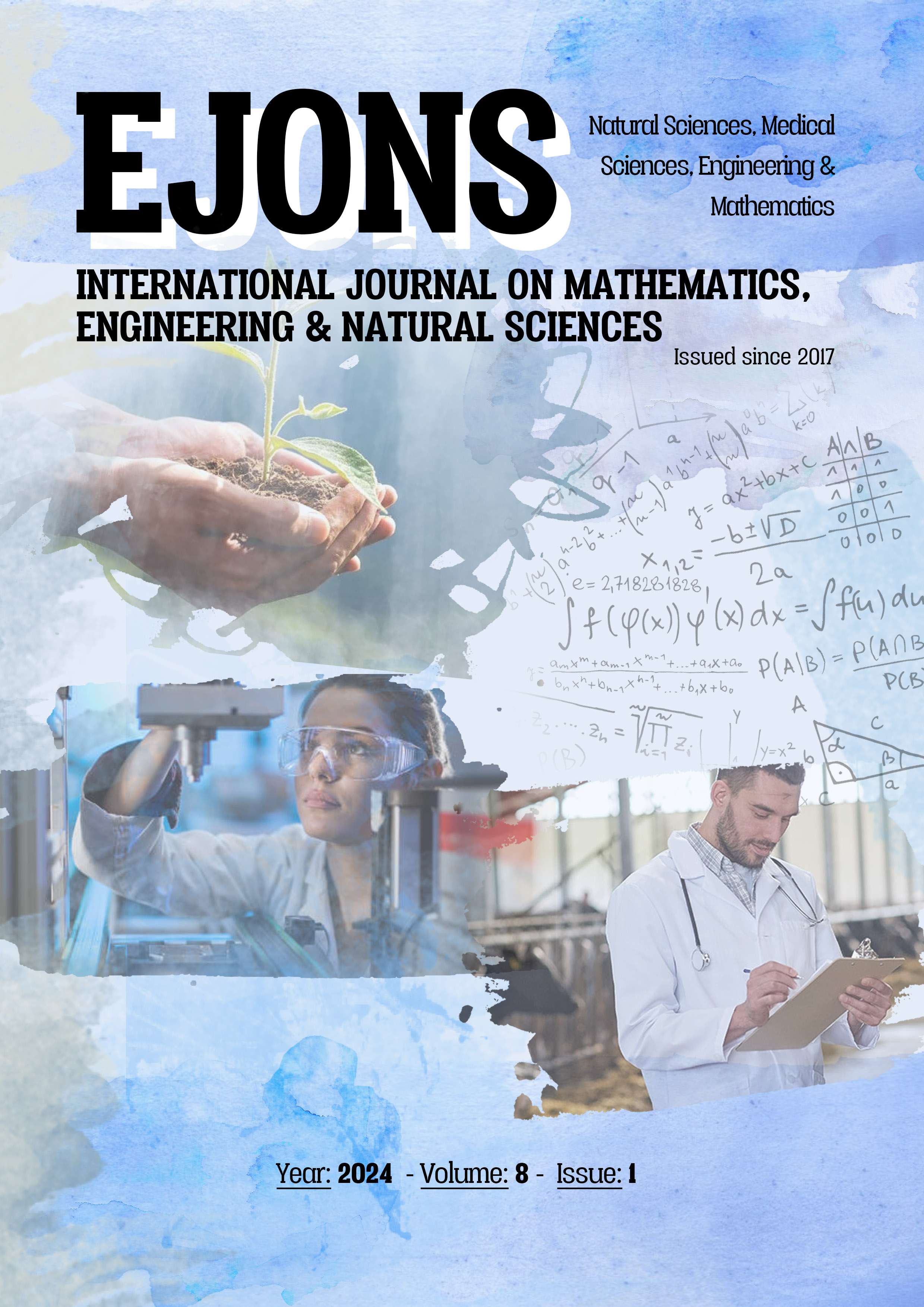The Importance Of Accident Cause Theories In Preventing Work Accidents
DOI:
https://doi.org/10.5281/zenodo.10814620Keywords:
Work accident, Work safety, Accident Cause Theories, Human mistakeAbstract
The concept of Occupational Health and Safety (OHS) has become much more important in working life with the increasing impact of today's technological developments and competition. All kinds of work related to preventing hazards, eliminating risks or minimizing the impact of possible damages in the work environment where people work within the framework of the right to life are included in the scope of OHS. In international legislation, measures regarding occupational health and safety, preventing work-related hazards and harmonizing work with employees are generally highlighted. In this context, research on the prevention of occupational accidents draws attention to the determination of the causes of accidents in businesses. Because scientific approaches developed to solve problems related to occupational accidents are only possible for defined situations, accident causation approaches are important in creating healthy and safe working environments.
In this study, first of all, the concept of occupational accidents, which are frequently encountered in business life, is mentioned in general, and then the theories developed by focusing on employees in order to explain the causes of accidents are emphasized. Within the scope of these theories; Domino, Accident/Incident, Human Factors, Epidemiology, System and Combination Theories were included and the importance of human-caused occupational accidents in working life was emphasized. With this study, it was aimed to draw attention to the creation of occupational safety awareness among employees by theoretically touching on the importance of accident cause theories and OHS principles in terms of preventing occupational accidents.
References
Aslanoğlu, O. (1991). İş kazalarında ilk yardım, Çalışma ve Sosyal Güvenlik Bakanlığı, İşçi Sağlığı ve İş Güvenliği
Sempozyumu, 4-10 Mayıs 1991, Ankara.
Colling, D. A., (1990). Industrial Safety: Management & Technology, Prentice Hall, Englewood Cliffs, NJ.
Dizdar, E. N. (2001). Kaza Sebeplendirme Yaklaşımları, Türk Tabipleri Birliği Mesleki Sağlık ve Güvenlik Dergisi,
Temmuz sayısı, s.26-31.
Erdem, M.S., Tüzemen, Ş., Yavuzkan, G., Köseoğlu, N., Ayadı, Y. ve Taghizadehalvandi, M. (2015). İnsan
Mühendisliğinde Pilotaj Hataları Ve / Veya Uçak Tasarım Problemleri Açısından Bir İnceleme: (İnsan
Hatalarının Önemi), Süleyman Demirel Üniversitesi Mühendislik Bilimleri ve Tasarım Dergisi 3(3),s. 493-
Ergin, H. Ve Mergen, A. (2017). Hazır Giyim Mağazacılık Sektöründe İş Kazaları ve Çözüm Önerileri: Örnek Bir
Uygulama, Marmara Fen Bilimleri Dergisi, (1), s. 29-38.
Goetsch, D. L. (1993). Industrial Safety and Health: In the Age of High Technology, Macmillan Publishing
Company, USA.
Heinrich, H. (1959). Industrial accident prevention, 4th Ed., New York, McGraw-Hill.
Heinrich, H. W., Petersen, D.& Roos, N. (1980). Industrial Accident Prevention, McGraw-Hill, (5th Ed.), New York,
USA.
Hollnagel, E. (1993). Human Reliability Analysis Context and Control, Academic Press Inc., San Diego, USA.
ILO, 1983, Encyclopaedia of Occupational Safety and Health, ILO, Geneva.
İş Sağlığı ve Güvenliği Kanunu (2012). T.C. Resmi Gazete,28339, 30 Haziran 2012.
İşsever, H. (2010). İş Kazaları, Kaza Sebep Teorileri, Güler, M. Ve İşsever,H. (Ed.), İş Sağlığı ve Güvenliği(içinde),
(s. 167-194), İstanbul Üniversitesi Açık ve Uzaktan Eğitim Fakültesi Ders Notu.
Kılkış, İ. (2014). İş Sağlığı ve Güvenliği, Dora Yayınları, Bursa.
Kurt, M. (1993). İş Kazalarının Ergonomik Analizi, Gazi Üniversitesi, Fen Bilimleri Enstitüsü, Yayınlanmamış
Doktora Tezi, Ankara.
Meister, D. (1987). Behavioural analysis and measure ment methods, Wiley, New York, USA. Oborne, D., 1995.
Rasmussen, J. (1985). Trends in human reliability analy sis, Ergonomics, 28(8), 1185-1195.
Rasmussen, J., Duncan, K.,& Leplat, J. (1987). New technology and human error, Wiley&Sons, New York.
Sabancı, A. Ve Sümer, S.K. (2015). Ergonomi, Nobel Yayıncılık, Ankara.
Sanders, J. (1983). On the nature and source of human error, Proceedings of the Second Symposium on Aviation
Psychology, Columbus, OH: Ohio State University, USA. 27.
Sanders, M. S. & McCormick, E. (1993). Human Factors in Engineering and Design, McGraw-Hill Inc., Seventh
Edition, Singapore.
Sanders, M. & Shaw, B. (1988) Research to determine the contribution of system factors in the occurrence of
under ground injury accidents, Pittsburgh.
Seber, V. (2012) İşçi Sağlığı ve İş Güvenliğinde Risk Analizleri Nasıl Yapılır?, Elektrik Mühendisliği Dergisi, Sayı 445,
s.30-34.
Selek, H. S.(2016). İş Sağlığı ve Güvenliği (İSG) Temel Konular, Seçkin Yayınevi, Ankara.
Sosyal Sigortalar ve Genel Sağlık Sigortası Kanunu (2006). T.C. Resmi Gazete, 26200, 16 Haziran 2006.
Tanır, F. (2010). İş Kazaları ve Kaza Sonrası Süreçler, Güler, M. Ve İşsever, H. (Ed.), İş Sağlığı ve Güvenliği (içinde),
(s. 195-224), İstanbul Üniversitesi Açık ve Uzaktan Eğitim Fakültesi Ders Notu.
Telman, N., Önen, L. Ve Özgeldi, M. (2015). Psikolojide İş Sağlığı İş Güvenliği, Nobel Yayınevi, Ankara.
Tufan, B. (1994). Göçmen İşçilerde İş Kazaları, SSK Yayın No: 556, Mayıs.
Ünsar, A.S. (2004). İş Kazaları Ve Örgütsel Verimlilik, Verimlilik Dergisi, (3), s.89-102.
Yahnioğlu, N., (2017). İş Sağlığı ve Güvenliği Bilinci, https://slideplayer.biz.tr/slide/10220257/, Erişim Tarihi:
01.2024
Yılmaz, A.İ. (2013). İş Sağlığı ve Güvenliğinde Kaza Zinciri Teorisinin Önemi ile Açık İşletmelerdeki Tehlikeli Hareket
ve Tehlikeli Durumlar, Yer Altı Kaynakları Dergisi, 2 (3), s. 27-39.
Yılmaz, G. (2009). İş Kazalarının Nedenleri ve Maliyeti, Mühendis ve Makina Dergisi, 50 (592), s.27-32.
https://eforosgb.com/is-kazalarinda-domino-etkisi-teorisi/, Erişim Tarihi: 16.01.2024
Downloads
Published
How to Cite
Issue
Section
License
Copyright (c) 2024 EJONS INTERNATIONAL JOURNAL

This work is licensed under a Creative Commons Attribution-NonCommercial 4.0 International License.


